July 17, 2025 • 18 min read
Retail Customer Experience: Strategies and How to Improve It

Content Writer
July 17, 2025
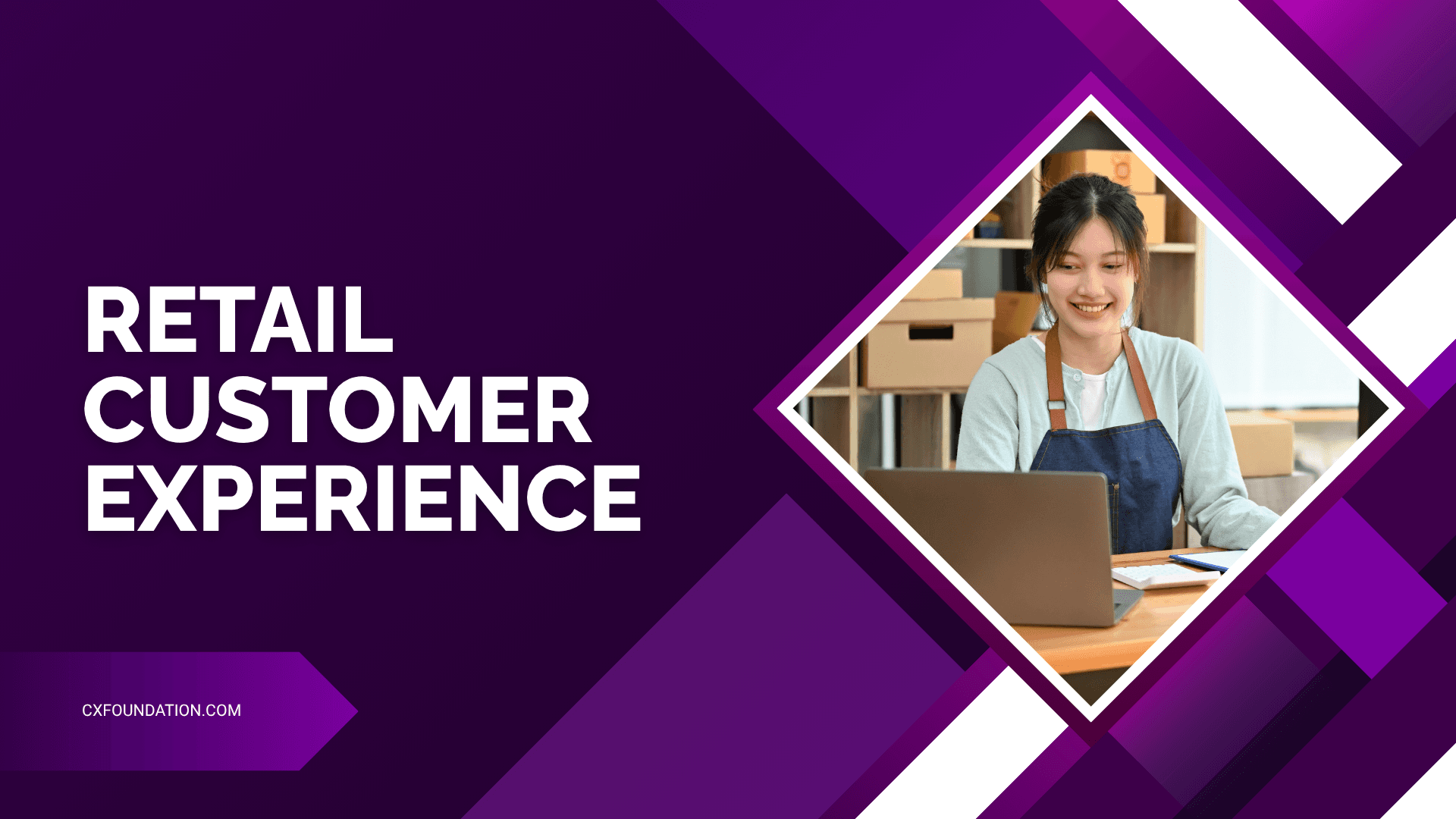
What Is Retail Customer Experience?
Retail customer experience (CX) is the totality of every interaction your customer has with your brand: from the second they discover you to the moment they potentially become brand advocates. It is a proactive process unlike customer service which is reactive. Retail customer experience’s goal is to build loyalty before breakdowns or misunderstandings even happen.
In 2025, 89% of companies compete primarily on CX as product and price become more and more trivial differentiators.[*] Customers not only compare experiences with your brand to your direct competitors but industry titans like Apple and Amazon. This poses a new mission-critical challenge for your organization: building a world-class customer-first retail experience that keeps customers satisfied and impressed.
Why the Retail Customer Experience Is Important
Retail customer experience is important for revenue growth potential. The numbers don’t lie: companies that choose to hone their CX experiences see up to a staggering 80% increase in revenue, while customer-centric brands achieve 60% higher profits compared to their nearest competitors.[*]
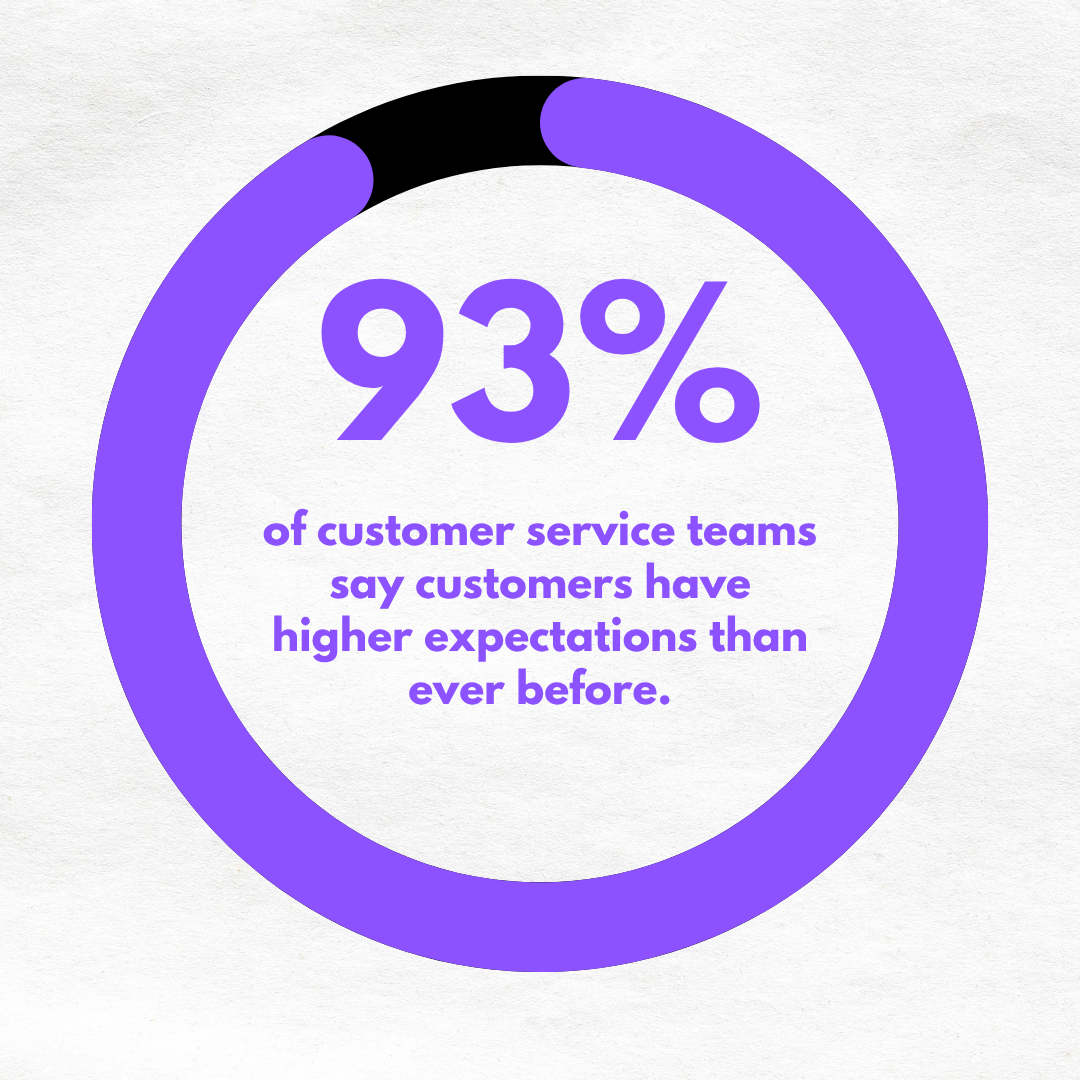
93% of customer service teams say customers have higher expectations than ever before.[*] A robust retail customer experience is a profound competitive advantage with so many players selling the same products and services, experience will be your key differentiating factor. You may not win on price, but if you win on speed, personalization, and delighting customers, you will prevail. Customers don’t tweet about “good enough” experiences: they share what surprises them, what is frictionless, and what stands out. Retail CX encourages organic promotion and online reviews, your cheapest and best marketing tools.
Customers now expect frictionless and hybrid experiences, whether it’s buying online then picking up in store, real-time inventory updates, and personalized recommendations. 49% of customers say they have made impulse purchases just after receiving a more personalized experience.[*] If your experience is not tailored or proactive, you will be left behind.
Core Components of a Retail Customer Experience
Retail CX is not about a singular moment, it’s the entire ecosystem in which your customer moves through. Think about it this way: it starts from the moment they’re tapping “Add to Cart” on a phone to the moment someone walks through your flagship store to casually browse. Add up all your touchpoints, policies, and every detail of the environment you make.
If just one link of the chain breaks: indifferent staff, glitchy websites or apps, or an annoying archaic return policy, you risk losing customer trust and, at the end of the day, revenue. We’ve outlined what we consider brand-defining experiences below:
Physical and Digital Touchpoints
First impressions are made the moment someone walks in or logs on. Whether it’s shelf layout or mobile UX, every touchpoint shapes how customers value your brand. Get it wrong, and they’re gone.
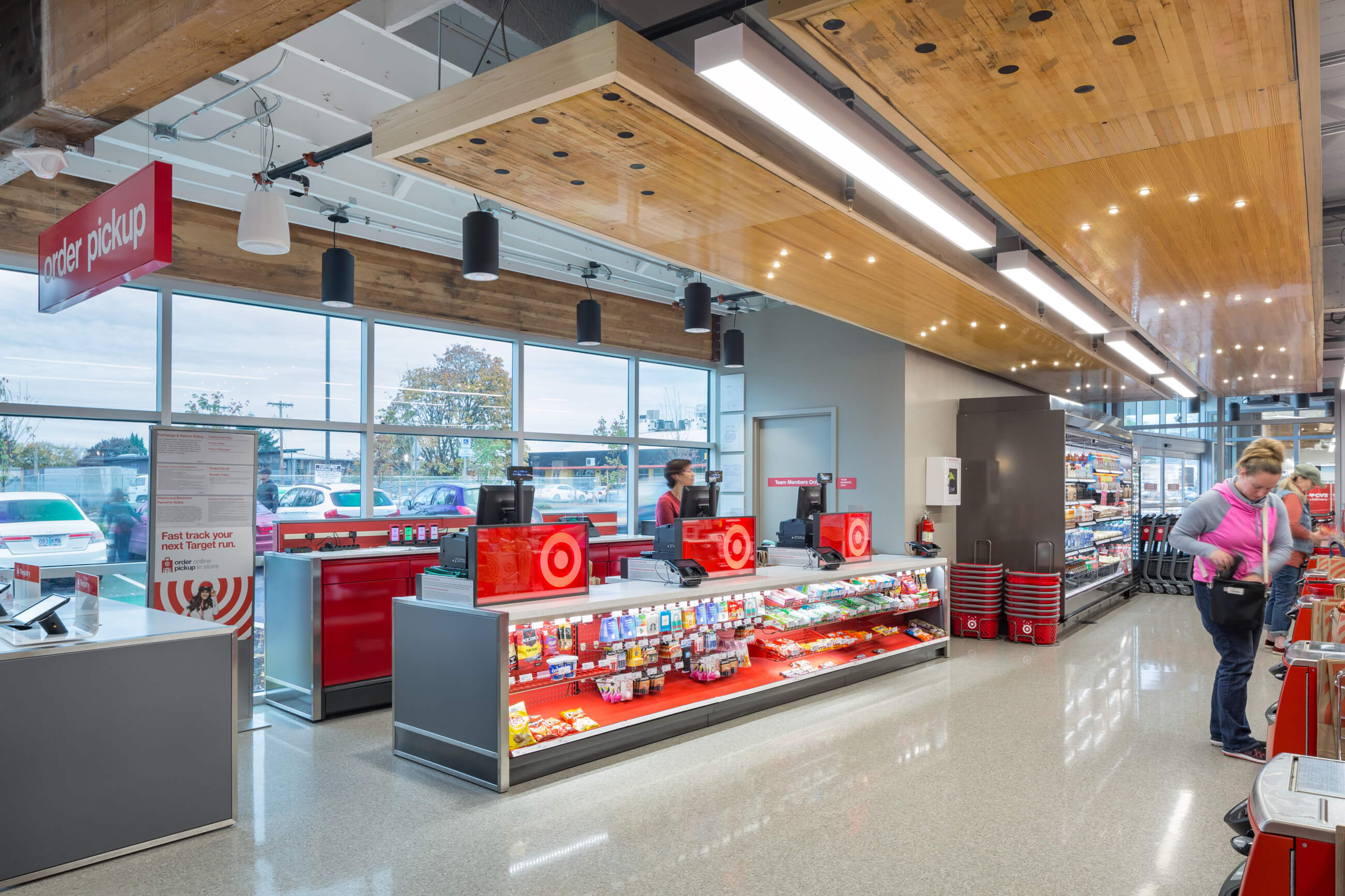
Products and Presentation
Your inventory is your core value proposition to customers, but how you display these shape how they perceive your value. Strategic merchandising doesn’t have to be all visual, sometimes a user experience (UX) slant is advantageous.
For your in-store experience: consider laying out the store to increase dwelling time and allow customers to discover items they had not considered before. Within the online world: it’s all about clear categorization and smart filters to build a friction-less experience that allows customers to find what they need when they want it. Poor presentation must be avoided as it can make even your most premium offerings look average or ordinary.
Website, App, and Mobile UX
Mobile traffic drives more than half of e-commerce traffic, but mobile conversion sometimes straddles behind due to clunky design.
Here are some key things to consider for your digital UX:
- Prioritize speed, simplicity, and clarity
- Provide a seamless transition between mobile and desktop
- Personalization needs to hit the mark without coming off as intrusive
Most importantly, a laggy interface that costs your users time will cost you sales. 88% of online consumers say that they are not going to return to a website or an app after just ONE bad experience.[*]
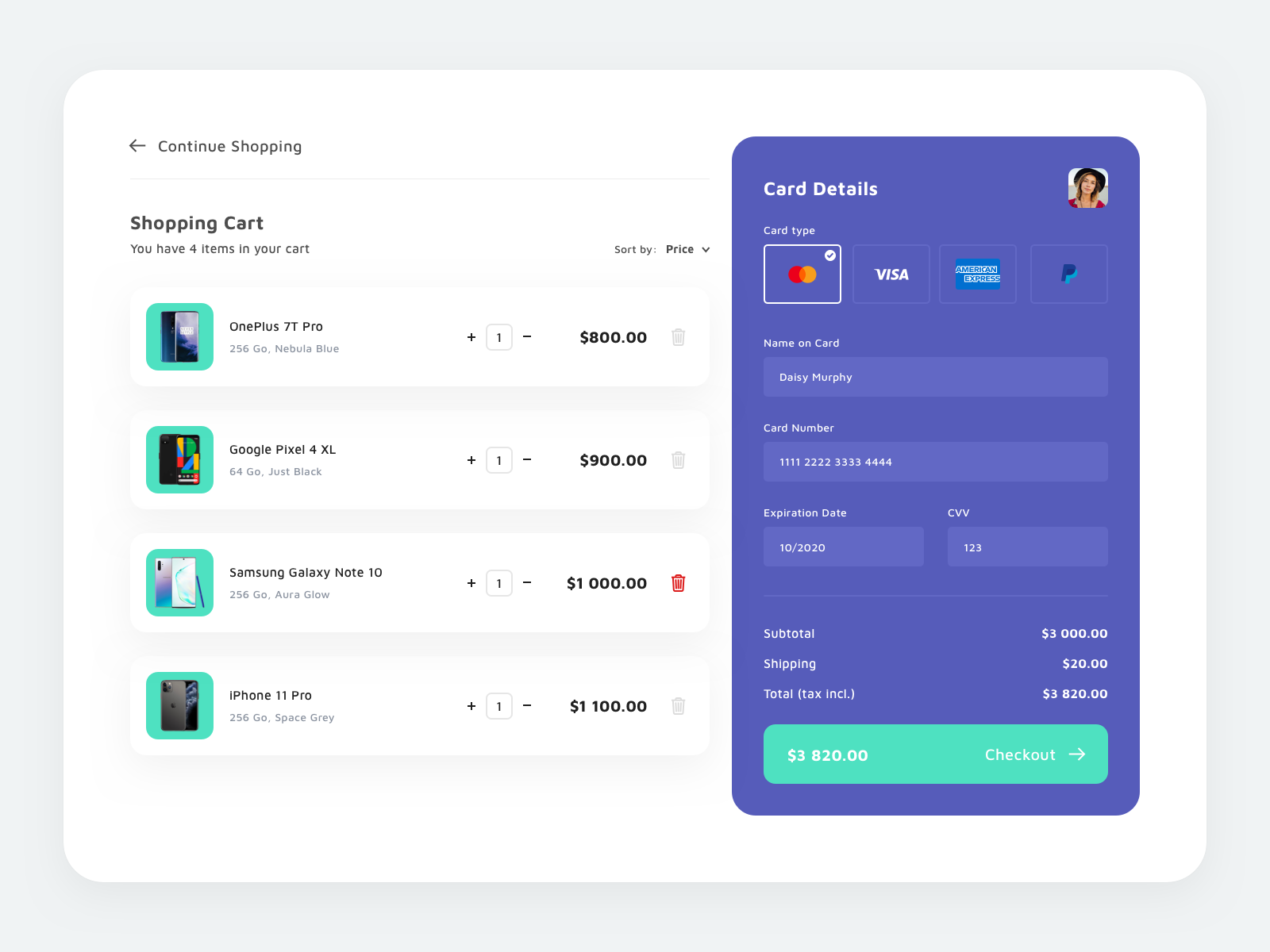
Checkout Experiences that Close the Deal
Do not fumble the final steps in the customer journey with a terrible checkout experience that leads customers to leave at the last minute.
For your in-store experiences, hazards like: long lines due to understaffing or poor design, confusing payment methods and options, and upsell overload will stop your moment. In the digital realm, you need to offer one-click checkout, guest checkout options (for those who do not want to commit to an account on your site), and digital wallet access. These are not extras.
Service and Support
Great service means showing up, every time, everywhere. Whether online or in-store, your support experience needs to be fast, informed, and consistent. That’s what turns one-time buyers into loyal fans.
Responsive Customer Care
73% of customers say that a fast response time is the first and foremost thing a brand can do to improve service.[*] Take advantage of live chat, SMS, and AI assistants to triage customer concerns and questions and escalate to human-centered customer support when needed.
Proactive and Knowledgeable Staff
Your store associates are the frontline and immediate avatars for your customer experience, they need to know the product and have to read a customer’s mood to turn your browsers into buyers. Give your teams the real-time data and training they need to close the sale and build advocates out of your clientele. Personal touches, like remembering past purchases or preferences, matter.
Omnichannel Consistency
Customers expect the same tone, policy, and performance across email, phone, social, and in-person. To support them best, you must build a unified knowledge base that services all aspects of your omnichannel strategy to keep responses consistent and clean. Create a single customer view across all systems.
CX doesn’t live in a silo. Neither should your support channels.
Perks, Policies, and Environment
Experience lives in the perks you offer, the policies you enforce, and the space you create. These details may seem small but come together to signal how much you value your customers’ time, trust, and comfort.
Loyalty Programs
The strongest loyalty programs are not all about points, they’re emotionally-wired experiences. Offering tiered status, early access, personalized offers for your most loyal and consistent customers is expected. Research shows these programs impact profits as more than 75% of consumers say they’ll switch brands for better reward programs. The same percentage says they are more likely to purchase from a brand that recognizes them by name and personalizes their experiences.[*]
Flexible Returns/Exchanges
Clear, generous policies build confidence pre-purchase. Offer instant store credit and hassle-free options to boost repurchase rates. Do not forget that the post-purchase experience is just as much part of the CX as the purchasing journey.
Ambiance & Accessibility
Design transcends the aesthetics trappings of your brand, it’s very psychological. Being strategic means understanding how even the smallest details affect your customers. Music tempo affects pace. Lighting affects linger or dwell time. Signage affects sales.
Accessibility isn't a compliance checkbox, it’s a brand differentiator. If you want customers to stay longer and potentially spend more, you need to invest. Whether it is physical or digital, it is key to create inviting, inclusive, and intuitive spaces.
How to Improve the Retail Customer Experience
Effective retail CX is intentional, not accidental. Vibes and gut instincts do not cut it, you need to design, test, and optimize your system. You are already losing ground if your brand chases CX reactively. Below are some ways to take back control and form experiences that convert, retain, and resonate:
Build a CX Improvement Framework
Your customer experience framework needs to be structured, measurable, and continually improving.
- Plan → Evaluate → Act loop: Build a roadmap, implement changes, and reassess. This is not some one-time initiative, it’s loop that never stops
- Collect feedback to analyze pain points: Using CSAT, NPS, behavioral analytics, and customer input to iterate is key, what worked last quarter may not apply next
- Prioritize the most effective touchpoints: Repair what’s broken and what’s hurting your bottom-line most. If that’s your UX, consider the facts: 70% of online carts are abandoned due to bad UX.[*] Do not waste your time optimizing what’s already perfectly fine, attack your friction points now
Empower Employees
Customer loyalty is formed through each conversation and each interaction at a time, your team’s ability to deliver those moments is all on what you give them to work with behind the scenes.
- Invest in staff training: Companies with highly engaged employees outperform their competitors by nearly 147% in earnings.[*] Each dollar invested in your staff pays back in earnest
- Give access to customer data and insights: Your employees cannot personalize like pros if they don’t know your customers’ preferences, past issues, or purchase history
- Improve the employee experience as a CX driver: Burnout and high turnover kill your CX potential. Happy teams make memorable and positive experiences for your customers. Disengaged employees
Centralize Your CX Operations
Fragmented systems lead to fragmented experiences. Your customers do not see departments, they see your brand as a single entity, your internal systems need to account for that. Brands that lead in customer experiences outperform competitors by 80% in ROI.[*]
- Use a unified customer experience platform: A centralized CX platform ensures that your marketing, sales, support, and product teams have one view of the customer and no room for blind spots
- Integrate data from systems: POS, CRM, eCommerce, and your support tools need to talk to each other, otherwise it creates a silo-induced black hole: duplicated work, bad handoffs, missed signals, and unhappy customers
- Break down silos across departments: Creating cross-functional CX teams is imperative: when Ops, CX, and Product come together, you kill friction at the source
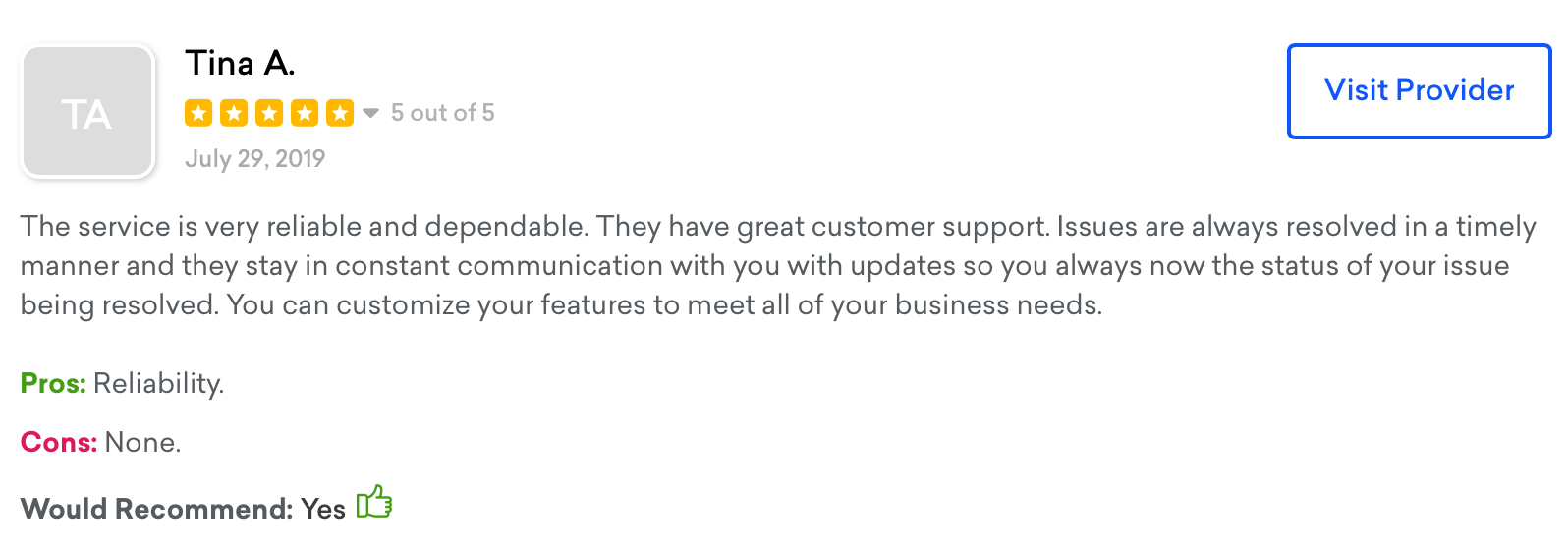
Close the Feedback Loop
If customers speak up and do not see changes, they’re not only going to not speak again. They’ll leave you. If you’ve been collecting feedback always, what will you do with it?
- Respond to detractors and promoters alike: Every one-star review is a loyalty test, every promoter is a potential brand ambassador. You need to reward your loyal customers and show your detractors that you’re aware of issues and are working on them
- Show customers their feedback is acted on: “Thanks for your input” is a canned response, you need to show your customers that they’ve sparked real change, consider active statements like, “we’ve added same-day pickup based on your request”
- Use feedback to inform marketing and product decisions: Individual issues are a band-aid, you need to let trends in feedback inform you on your next campaign, critical product updates, or a revitalized in-store experience
Digital Retail Experience Tactics
Digital storefronts are not just your sales channel, they are your brand. If you provide a slow, clunky, or impersonal experience, customers will see you that way and bounce just as fast. Digital CX is the front of line, and these are non-negotiable moves to make:
- Create a fast, mobile-optimized website: 50% of users say they’ll leave if your site takes more than just 3 seconds to load.[*] Optimize for speed, compress images,ensure you have a mobile-first design since they account for over 65% of retail traffic.[*] Speed is trust and trust leads to conversions.
- Enable personalized browsing and product suggestions: 91% of customers say they want to shop with brands that recognize and remember them to provide relevant offers.[*] AI adapts to recommend products on the fly through browsing and purchase history keeping users engaged and cutting on decision fatigue
- Implement responsive customer support (chat, email, social): Customers expect help on their own terms whether through email, chat, or DMs instantaneously
- Offer multiple payment and fulfillment options: Buy Now, Play Later (BNPL) grew over 30% YoY.[*] Digital wallets like Apple Pay or PayPal are now preferred by younger Gen Z and Millennial shoppers. Times are changing, the expectations are higher. Things like ship-to-store, curbside, and same-day delivery are not extras anymore.
- Explore immersive tools like AR/VR: Studies show that augmented reality (AR) increases conversion by up to 90% in certain industries.[*] Customers want to virtually try-on your wares, they want 3D product views, and VR showrooms cut hesitation and return rates
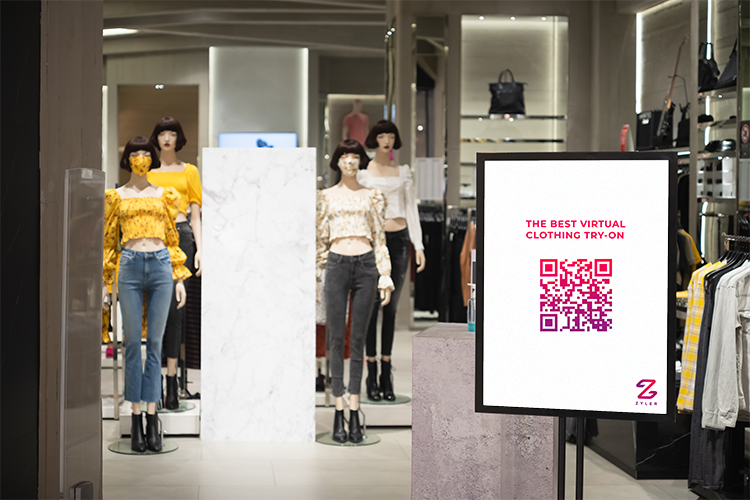
In-Store Retail Experience Tactics
The physical store is not to be underestimated: every aisle, sound, and smile means something. Digital drives on convenience, but brick-and-mortar stores thrive on emotion and loyalty. Here are some pointers on making your store a thrilling experience:
- Improve store layout and signage: Guide movement using decompression zones and “power walls.” Clean and bold signage is always about cutting frustration and improving wayfinding. Likewise, strategic placements of impulse buys can boost basket size by 25%.[*]
- Train staff for proactive, personalized assistance: Employees need real-time customer data like loyalty status and previous purchases to best assist and personalize, the human touch is what keeps people coming to stores over shopping online
- Speed up checkout and returns: Install contactless and mobile ready terminals, self-checkout stations for quick trips, and remember that short queues increase purchase likelihood by nearly 37%[*]
- Host interactive events and promotions: FOMO can be your greatest ally if you make your physical store a destination. Early access to workshops, influencer visits, and collections keep customers invested and connected with your brand
- Add comfort features to raise dwell time: Wi-Fi, water refill stations, seating, and fitting room mirrors all increase lingering time and raise the average transaction value. The longer your customers stay put in a store, the more they spend
Omnichannel and Unified CX Strategies for Retail
Seamless is the new standard, your customer experience cannot be disconnected between platforms if you’re looking to build loyalty. The everyday shopper of today expects one journey, regardless of whatever channel they pick up or drop along the way.
- Blend online and offline journeys: Be sure to enable BOPIS (Buy Online, Pick Up In Store), BORIS (Buy Online, Return In Store) and ROPIS (Reserve Online, Pick Up In Store). BOPIS users on average spend 20-30% more when picking up orders[*]
- Maintain brand consistency across touchpoints: Whether you’re interacting through TikTok comments, SMS, or in-store signage, customers should feel they’re talking to one brand and not ten different departments. Mismatched tones lead to friction and eventually lost sales
- Build unified customer profiles to personalize across channels: Stitch together your CRM data, loyalty program information, POS, and website behavior to build comprehensive personalized profiles per customer
Retail Customer Experience Trends in 2025
In 2025, it’s not enough for retailers to play catch up: they need to be shaping the future. Here’s some of the trends that are redefining customer expectations and how some of the sharpest brands are molding retail CX in the years to come.
AI and Predictive CX
AI is not just a tool, it is the first responder for those leveraging it to its greatest potential. 80% of CX leaders aim to boost resolution and response metrics using AI. Smart brands are not waiting for issues, they are preventing them. AI doesn’t replace workers, it augments them, with some companies seeing 44% of incoming support requests being handled by AI alone leading to lower resolution times and customer satisfaction numbers at 92%.[*]
Say goodbye to simple chatbots and hello to intelligent copilots who recommend answers, route questions to the right experts, and even learn from tone and behavioral data. Cues like hover time and form abandonment can supplant surveys over time, AI is rewriting and rewiring the way support and sales are done.
Experiential and Hybrid Commerce
Forget the time-old divide between online and offline. The retail stage is becoming hybrid, with the spotlight shining on experience. Take live commerce: streamed demos and real-time engagement turn routine browsing into interactive entertainment. Virtual consultations now anchor luxury and wellness brands even outside city centers.
Augmented reality: it’s a conversion engine. Retailers offer AR try-ons and see returns plummet, engagement climb, and confidence soar. When your app lets you “try before you buy,” hesitation evaporates, and conversions follow.
Loyalty programs are playing the dual-channel card, too. Shoppers will gain points online and redeem them in-store or vice versa. This synergy becomes a funnel, pulling them deeper into your ecosystem, no matter where they start their journey.
Empowered Frontline Employees
Your store associates are no longer just cashiers: they’re CX ambassadors armed with data. None more so than Sam’s Club. Their pioneering “Scan & Go” and AI-powered exit gates have now spread to over 120 locations, letting customers walk out effortlessly and reducing exit times by 23%. As a result, their customer satisfaction scores climbed to 85, overtaking Costco’s 82.[*]
More than half of Shoppers in those stores now use tech-first checkouts, trading time at the register for instant freedom and saving labor for personalized assistance. Staff armed with real-time purchase histories can anticipate questions and preempt friction. Empowered employees aren’t just efficient: they drive loyalty.
Sustainability as a CX Driver
Transparent sourcing, eco-friendly packaging, even carbon-neutral shipping are things even the least eco-savvy customers come to expect. Brands embracing transparency will make the case for potential premium pricing. Conscious consumers, particularly younger Gen Z and Millennials, are fine paying more when a product’s sustainability journey is clear. Some report that customers are willing to pay as much as 9.7% more on sustainable goods.[*] That extra cost isn’t a barrier: it’s proof of purpose. And in retail, purpose now equals preference.
How to Measure the Retail Customer Experience
Key CX Metrics
Key customer experience metrics grant you visibility into what’s working, what’s broken, and where to invest tomorrow. Great CX is not guesswork, you need hard data, clear signals, and KPIs to help cut through the noise.
- Net Promoter Score (NPS): Net promoter score measures how likely a customer is to recommend your brand to others, usually on a scale from 0-10
- Customer Satisfaction (CSAT): CSAT scores gauge customer satisfaction right after a specific interaction, these are normally conducted via quick surveys on a 5-point scale
- Customer Effort Score (CES): A customer effort score (CES) measures how easy or how hard it was for your customer to get a problem solved or to complete a necessary task
- Cart abandonment and checkout conversion: Cart Abandonment Rate is the percentage of users who add items to a cart but don’t pull the trigger when it comes time to check out
Loyalty and Feedback Signals
Metrics don’t stop at the point of sale. The real insights often come after the purchase.
- Repeat purchase rate: This tells you if you’ve earned trust or just made a one-time sale
- Engagement with loyalty programs: How your customers interact with established loyalty programs reveal who’s buying in (literally and emotionally). Are customers cashing in their points? Are they climbing tiers?
- In-store and post-purchase feedback collection: Whether it’s a star rating, a quick survey, or a handwritten note on a receipt, it gives you qualitative color on the experience. And don’t forget in-store feedback: QR codes at checkout, tablets at exits, or even brief, well-trained staff prompts can surface what no dashboard ever will.
Retail Customer Experience Examples
Today, retail has ceased being about shelves and checkout lines: it's clearly emotion and execution. The retailers winning right now are the same ones making strides and putting customer experiences at the forefront of the strategy. They revive trust via better service, reimagine convenience with AI, and craft unforgettable in-store moments. These retailers prove that CX is the ultimate growth engine. Let’s take a look at how Sam’s Club, John Lewis, and Canada Goose are setting the new gold standard.
Sam’s Club

Sam’s Club disrupted warehouse retail by pioneering an AI-driven “just walk out” checkout system: an innovation so smooth that over 50% of members now breeze through stores without traditional lanes. In doing so, they overtook long-time leader Costco in the latest ACSI, jumping to 85 points versus Costco’s 82.[*]
It’s more than a novelty: AI exit tech cut exit times by up to 40%, freed up staff time, and shifted customer sentiment, marking one of the clearest CX-to-metric success stories in recent retail history.[*]
John Lewis
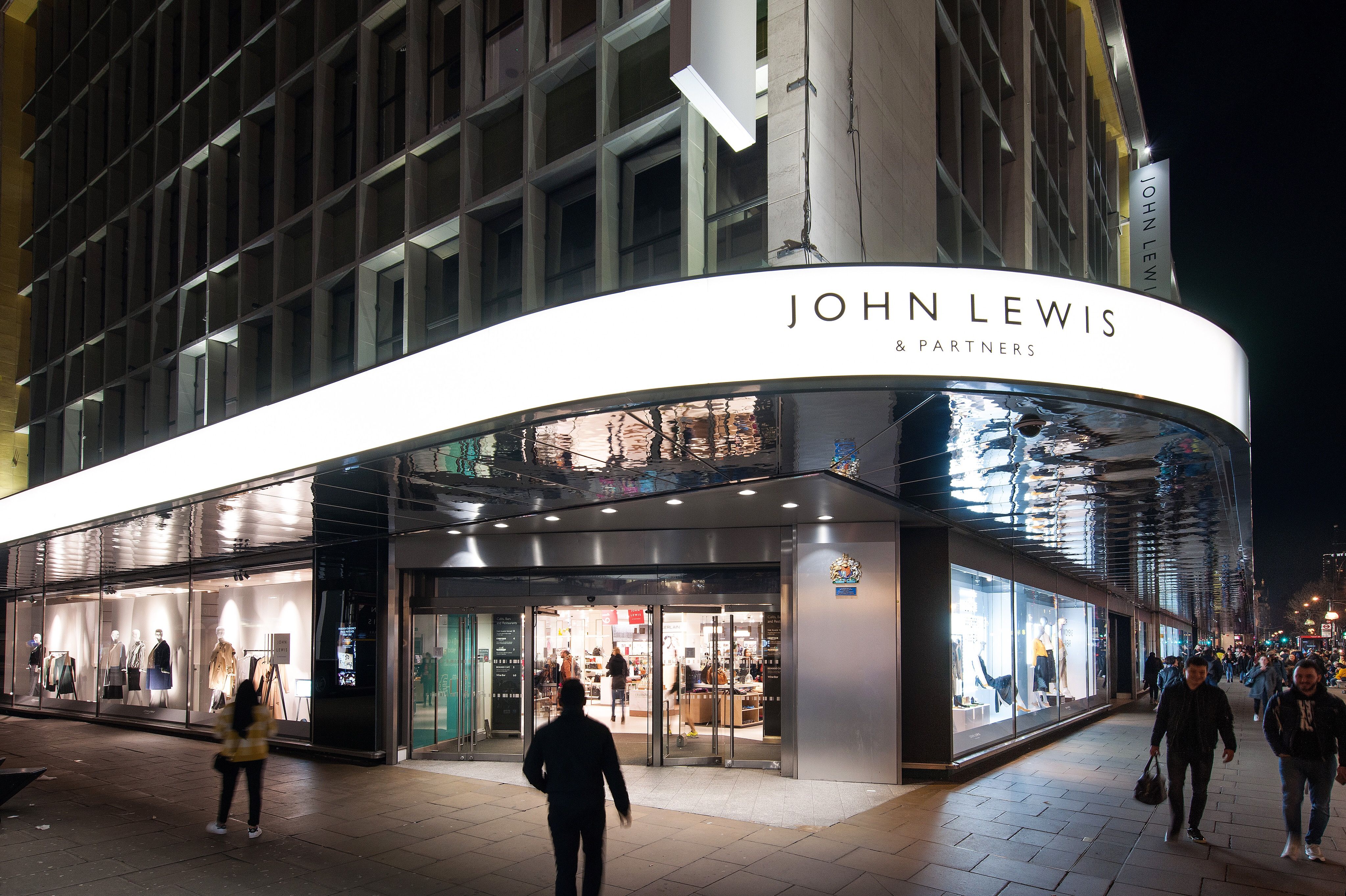
In mid-2025, John Lewis stormed back to the top of the UK Customer Satisfaction Index with an impressive 86.7 score, overtaking M&S and landing third overall across all sectors.[*] This wasn’t luck: it followed a bold turnaround led by retraining frontline staff, revamping store environments, optimizing online services, and reintroducing their signature “Never Knowingly Undersold” pledge.
By reconnecting with what made the brand beloved: authentic service, environment, and value, John Lewis didn’t just boost satisfaction. It spurred a 73% profit surge, proving that loyalty-driven CX fuels performance.
Canada Goose
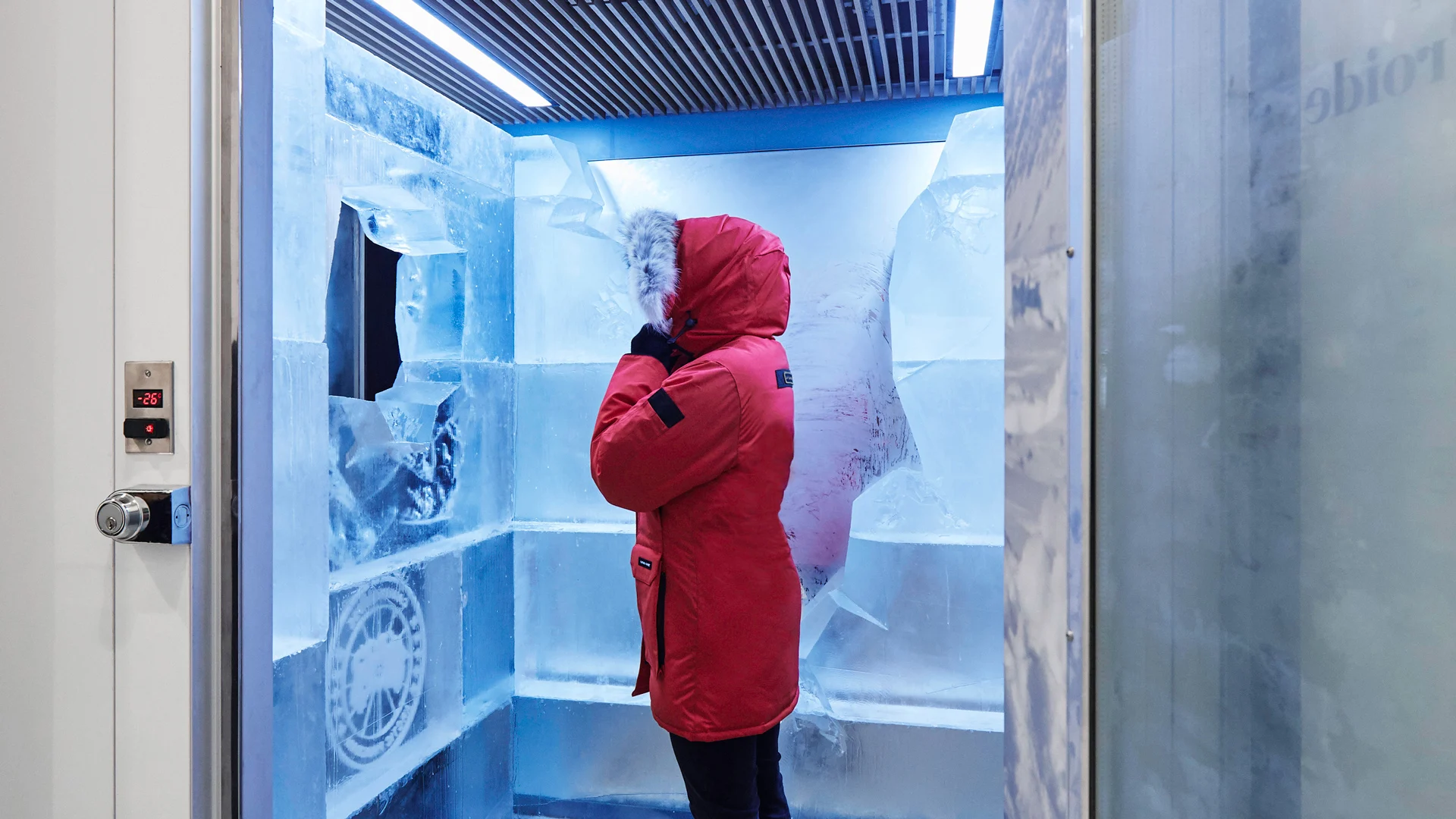
What happens when a luxury parka brand invites customers into a -27 °F Cold Room to try on jackets? You create an unforgettable story. Canada Goose’s immersive retail spaces, complete with lounges, art installations, and ice-cold testing zones, have become destination experiences.[*]
That investment paid off: their direct-to-consumer sales jumped nearly 16% year-over-year, while DTC-driven experiential enhancements fueled comparable sales growth even in challenging markets.[*] When your brand is about extreme cold, showcasing expertise, and confidence matters.
FAQs
Consider using kiosks, QR-enabled text surveys, or even tablet prompts. Keep those prompts short and contextual (like “rate this checkout experience out of 5”).
Do not invest in flashy tech. Focus on bolstering staff training, ironing out inconsistencies in policies, and tackling tangible pain points.
If you see higher return rates, low repeat visits, a decline in NPS or CSAT and social media complaints, you are failing. Monitor for these monthly.
Conduct pulse checks monthly, quarterly full audits, and go for strategic deep-dives on an annual cadence in accordance with your own business planning cycles.